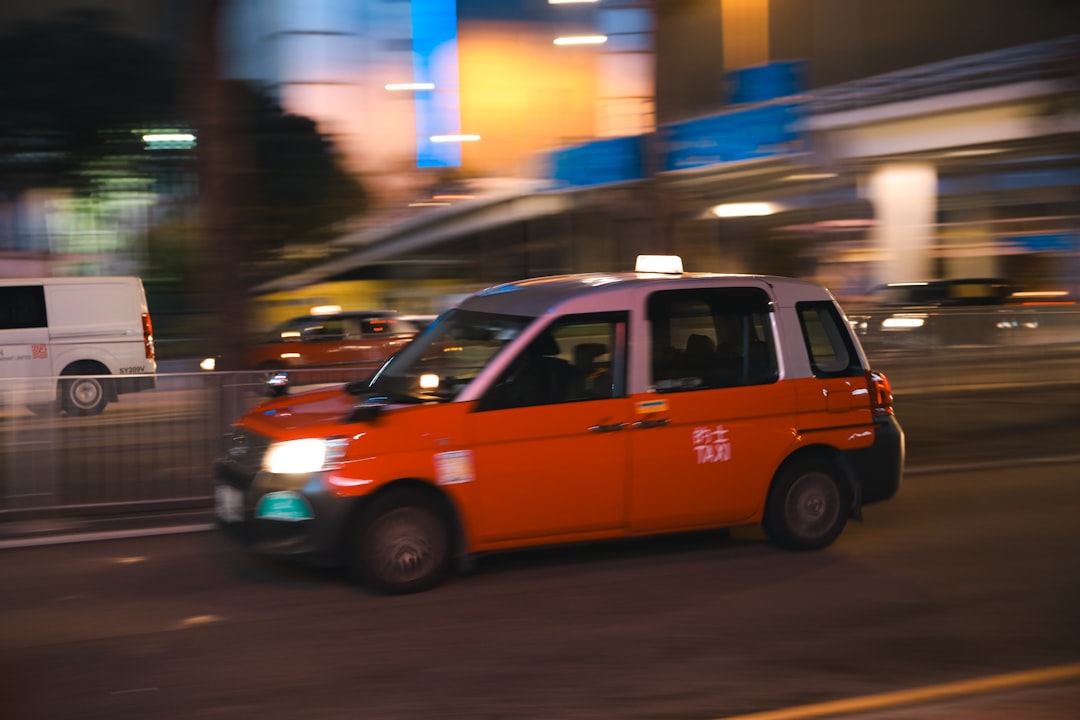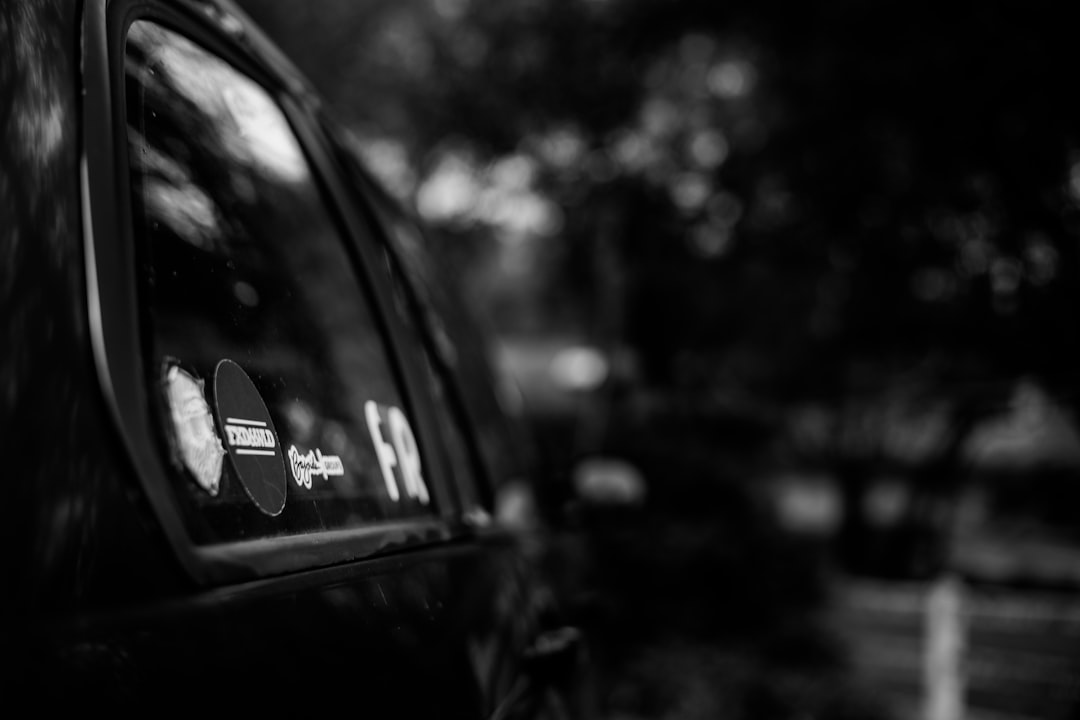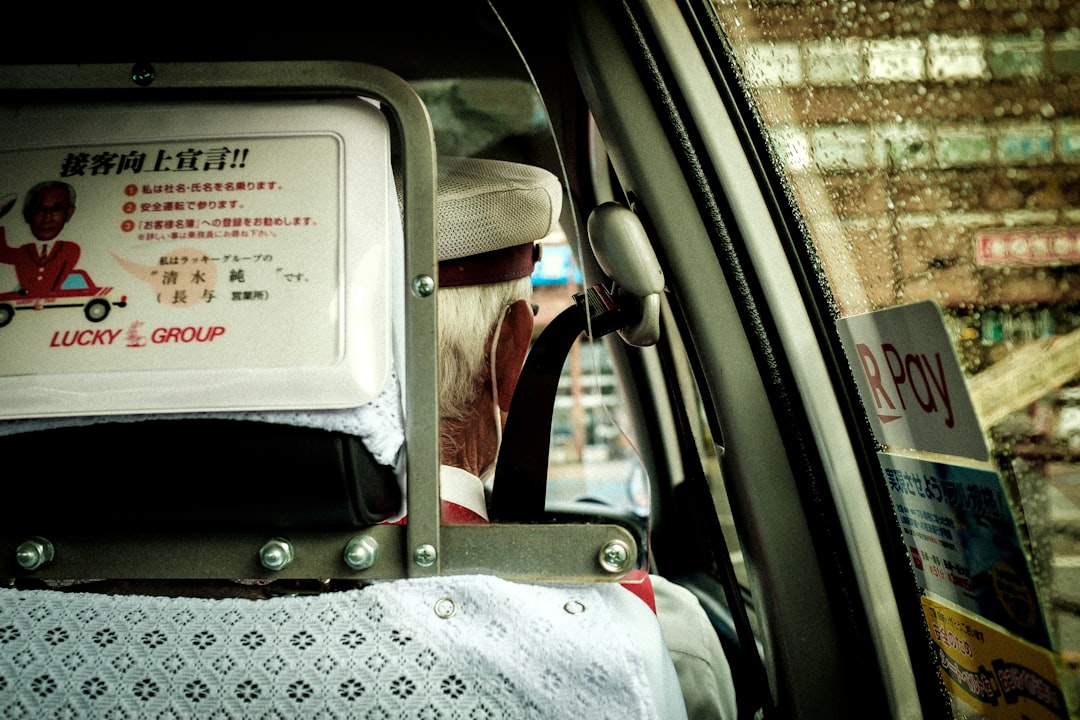

Engage prospects with a scan and streamline customer engagement with FREE QR code marketing tools by Sona – no strings attached!
Create a Free QR CodeFree consultation

No commitment

Engage prospects with a scan and streamline customer engagement with FREE QR code marketing tools by Sona – no strings attached!
Create a Free QR CodeFree consultation

No commitment
As the popularity of carpooling services continues to rise, businesses in this sector are searching for efficient ways to bridge the gap between offline interactions and digital engagement. However, a persistent challenge remains: traditional marketing often fails to capture the full scope of interested commuters, particularly those who research or engage without taking further action, leaving high-value prospects untracked and opportunities unrealized. With today’s commuters inundated by choices, from ridesharing apps to public transportation, standing out and ensuring that interest translates into bookings and loyalty is critical.
QR codes are emerging as a practical, cost-effective answer, with resources like this QR code marketing guide creating effortless entry points for potential riders without requiring app downloads or complex onboarding. When deployed smartly on marketing materials, vehicle signage, or at key transportation hubs, QR codes guide users into booking flows and sign-ups, and crucially, capture previously invisible engagement. This digital handoff streamlines onboarding and trip scheduling, reduces manual workloads, and generates actionable data to inform future campaigns and optimize retargeting.
This guide explores how carpooling companies can implement and optimize QR code strategies to drive conversions, improve campaign tracking, and deliver seamless journeys for eco-conscious, cost-savvy commuters, while addressing the missed connections and inconsistent digital visibility that have challenged the industry for years.

For carpooling services, one of the biggest hurdles is transforming offline interest, such as a glance at a vehicle ad or a flyer at a bus stop, into a measurable lead or loyal user. All too often, high-value prospects stay invisible, having never made it to a registration form or app download. QR codes bridge this gap, turning fleeting offline attention into digital outcomes such as generated leads, increased app downloads, and commuter sign-ups.
To do this well, you need to modernize analog touchpoints, define clear success metrics, design codes that people actually want to scan, and instrument your campaigns for offline attribution. The goal is to eliminate friction at every step, surface intent data that has historically been lost, and create a feedback loop so your next campaign performs even better than the last.
Advanced tools now enable seamless syncing of this engagement data to your CRM, reducing disconnects between campaign spending and real return. As a result, even those who engage but do not immediately convert can be retargeted or nurtured with personalized emails, SMS, or paid ads, lifting overall campaign effectiveness for carpooling leaders. Platforms like Sona QR simplify this end-to-end process, making the move from analog to trackable QR journeys fast and low risk.

Modern carpooling faces unique friction points: offline awareness rarely converts directly, many prospects never fill out a digital form, and there is little visibility into who engages with print assets at all. This lack of transparency can mean high-value prospects remain unknown and high demo interest goes unaddressed. With commuter decisions happening in the flow of daily routines, a clear and immediate path to action is essential.
QR codes create that path, turning static materials into actionable gateways. By pairing intent-rich environments with scan-ready CTAs, you replace hope-based marketing with measurable engagement. You also equip operations teams with tools that reduce manual work and provide unbiased insight into which assets truly move the needle.
By bridging physical and digital journeys, QR codes end the struggle of measuring and retargeting anonymous, high-intent traffic. They turn lost opportunity into a strategic growth channel, supporting both acquisition and retention while honoring the fast-moving realities of commuter life.
Carpooling operations frequently struggle with tracking different engagement types, from eco-curious browsing to direct booking intent, and with surfacing the signals that predict conversion. Flexible QR formats help you match the right destination to the right moment and capture the data that aligns with your goals.
For carpooling, dynamic QR codes tied to real-time scheduling, incentive calculators, or commuter challenges often outperform static assets. You gain agility and measurement while giving riders live information that matches what they need in the moment.

Carpooling brands often lose promising leads simply because campaign messaging fails to reach users at the right stage or gets lost amid commuter routines. Disconnected deployments with QR codes placed without context dilute brand value and waste spend. The key is to match placements with intent-rich environments where convenience matters.
Start by mapping a commuter’s day and identifying dwell points where attention is available, friction is high, or decisions are pending. Then craft QR experiences that remove effort and offer a clear reward for scanning.
By focusing on high-relevance placements, carpooling services can reduce the disconnect between offline reach and online engagement. QR scans quickly highlight true growth opportunities and indicate where messaging, offers, or targeting need refinement.

Carpooling operators frequently miss out on converting strong intent when riders or event attendees do not take the final step. QR codes simplify and surface these engagement opportunities, boosting bookings and deepening involvement with your community over time.
Each scenario addresses missed conversions and data gaps common to carpooling initiatives. When QR flows meet riders at the right time and place, initial curiosity turns into committed action and ongoing participation.
Too often, carpooling campaigns fail to capitalize on invisible audience segments, such as users who show strong offline intent but never submit a form or book a ride. Without the right follow-up, demo interest and trial users remain uncaptured, leading to missed upsell and retention opportunities. QR scans give you the raw signals to fix that problem.
By assigning unique codes to different contexts and capturing scan metadata, you can automatically segment audiences by journey stage, intent, and environment. This allows you to tailor your follow-up outreach so it resonates with what the scanner actually wanted.
Modern QR solutions enable real-time syncing and segmentation, ensuring no engagement signal is left unaddressed. With Sona QR, each code becomes a smart entry point that feeds Sona analytics and CRM workflows, so carpool providers can respond promptly when intent surges.
Disconnected marketing campaigns are a recipe for wasted spend and prospect confusion. For carpooling, consolidating engagement signals from every channel, including print, digital, and in-person, is vital for delivering a cohesive customer journey and surfacing readiness to act. QR codes provide the connective tissue for that integration. Learn how to integrate QR codes.
When every code is tied to a consistent tagging and UTM framework, your offline assets become measurable like digital ads. You can evaluate creative, placements, and offers with confidence and allocate budget to what works.
A centralized QR management system makes this orchestration possible. With Sona QR, you can manage codes from a single dashboard, monitor performance by channel and context, and sync scan data to your CRM and ad platforms so every channel reinforces the others.
Effective execution closes the loop between interest signals and realized engagements, a critical need for carpooling services aiming to reduce leakage and optimize spend. A structured checklist ensures that each campaign is designed for clarity, scannability, measurement, and follow-through. It also helps cross-functional teams, from marketing to operations to driver partners, stay aligned on objectives and standards.
Before you begin, document your target audience segments, primary outcomes, and success criteria. Decide how you will measure lift against a baseline such as bookings per location, app installs per day, or scan-to-signup conversion. Then follow the steps below to deliver a repeatable process that scales.

A persistent frustration for carpooling marketers has been tying offline touchpoints to real business outcomes. When anonymous engagement at the top of the funnel is not tracked, high-fit prospects can churn before ever entering the pipeline, and successful campaign elements go unidentified. With QR-enabled analytics, you move from guessing to knowing.
Strong measurement starts with a consistent tagging strategy, continues with unified dashboards, and culminates in downstream attribution. By linking scan events to rides taken, accounts created, or referrals shared, you can validate which messages and placements deserve more investment.
By illuminating the customer journey from scan to revenue, QR analytics transform marketing from hopeful outreach into measurable, optimized growth. Sona QR captures scan-level detail, while Sona.com connects anonymous signals to known records through identity resolution and multi-touch attribution. Together, they help you prove how QR engagement contributes to pipeline and closed revenue and unify fragmented touchpoints across buying stages.
Sustaining success with QR codes means continuously surfacing and acting on refinement opportunities, especially to prevent message inconsistency and wasted spend on disconnected campaigns. Lean on automation and staff enablement so every physical interaction becomes a data-rich engagement.
Consider piloting small, fast iterations by placement and message theme. Use control groups to confirm uplift where possible. Over time, build a library of proven creative, standard code sizes for each surface, and follow-up cadences that consistently convert.
For creative deployment, try a commuter challenge poster in an office with a QR code that unlocks team-based eco rewards or a driver referral magnet inside vehicles that opens a prefilled referral form. Both tactics turn everyday spaces into measurable, conversion-friendly touchpoints. With Sona QR, these scans can instantly trigger workflows in your CRM so no moment of interest is wasted.
QR codes unlock a new frontier for carpooling services by closing persistent gaps: surfacing high-intent but untracked visitors, bridging offline actions to digital follow-up, and attributing value across every touchpoint. This not only enables instant engagement across the physical environment, it also supports a scalable, data-driven approach to acquisition and retention that addresses industry pain points like inconsistent messaging, wasted spend, and missed conversion opportunities.
Armed with the right strategies and insights, every vehicle, flyer, and station becomes a smart entryway. You transform previously anonymous or passive interest into measurable growth, deeper user engagement, and greater community impact. Over time, the combination of dynamic QR codes, disciplined tagging, and automated follow-ups creates a conversion engine that compounds with each campaign cycle.
Carpooling services that invest in QR-driven strategies are well positioned to address long-standing challenges such as missed prospects, invisible user journeys, and fragmented messaging. By linking offline curiosity directly to actionable digital flows and leveraging real-time analytics, providers can reduce wasted opportunities, optimize every campaign, and enhance outcomes for both commercial goals and environmental progress. With platforms like Sona QR for code management and Sona for attribution, you have everything you need to capture demand at the source and convert it into measurable results. Now is the time to ensure every ride and every user touchpoint serves as a living opportunity for growth, insight, and sustainable community impact. Start creating QR codes for free.
QR codes have revolutionized carpooling services by transforming traditional ride-sharing into seamless, data-driven experiences that boost user engagement and streamline operations. From simplifying rider sign-ups to enabling real-time updates and payments, QR codes empower carpool providers to attract new customers, enhance convenience, and improve overall service efficiency.
Imagine effortlessly tracking which pickup points and promotions generate the most bookings—and instantly optimizing your campaigns without reprinting materials. With Sona QR, you can create dynamic, trackable QR codes in seconds, update campaigns on the fly, and connect every scan directly to conversions and revenue growth. No guesswork, no delays—just smarter, more impactful carpooling campaigns.
Start for free with Sona QR today and turn every scan into a loyal rider, a seamless transaction, or a fully booked carpool.
Carpooling services connect commuters who share rides by enabling easy booking through digital platforms, often facilitated by QR codes that guide users from offline interest to online registration and trip scheduling.
Carpooling reduces commute costs, lowers environmental impact by decreasing pollution, and helps reduce traffic congestion by encouraging shared rides among commuters.
While the article does not list specific apps, it highlights platforms like Sona QR that provide QR code management and analytics to optimize carpooling services.
Carpooling consolidates multiple riders into fewer vehicles, which decreases the number of cars on the road, thereby reducing traffic congestion and lowering overall vehicle emissions.
The article does not provide specific safety tips for carpooling services.
QR codes create seamless connections between offline interest and digital engagement by enabling easy booking, app downloads, and information access, while capturing data to optimize campaigns and improve rider onboarding.
Effective QR code placements include vehicle exteriors and interiors, transit hubs, park-and-ride lots, office lobbies, community centers, event sponsorships, and print materials like flyers and direct mail.
Common QR code formats include web links to booking pages, app download links that detect device type, vCards for contact info, SMS or email initiation for ride requests, and dynamic codes for real-time updates and promotions.
They use analytics to capture scan source, time, device, and location, integrate scan data with CRM and advertising platforms, and employ multi-touch attribution to link scans to actual bookings and revenue.
By assigning unique QR codes per campaign and location, capturing scan metadata, segmenting audiences by user behavior, and syncing data with CRM tools, services can tailor personalized follow-ups and improve conversion rates.
They should embed QR codes with consistent tagging across print collateral, corporate partnerships, social campaigns, vehicle and hub placements, and event materials to unify offline and online engagement and measure effectiveness.
Marketers should define objectives, choose appropriate QR code types, design branded and scannable codes, deploy them in intent-rich locations, and track performance to optimize campaigns continuously.
Tracking and attribution help carpooling services connect offline engagement to real outcomes like app installs and ride bookings, enabling data-driven decisions to optimize spend and improve campaign results.
Strategies include generating unique QR codes for each asset, using UTM parameters for accurate attribution, automating follow-ups based on scan behavior, and training staff to promote scanning with clear benefit-driven messaging.
Use Sona QR's trackable codes to improve customer acquisition and engagement today.
Create Your FREE Trackable QR Code in SecondsJoin results-focused teams combining Sona Platform automation with advanced Google Ads strategies to scale lead generation

Connect your existing CRM

Free Account Enrichment

No setup fees
No commitment required

Free consultation

Get a custom Google Ads roadmap for your business






Launch campaigns that generate qualified leads in 30 days or less.
